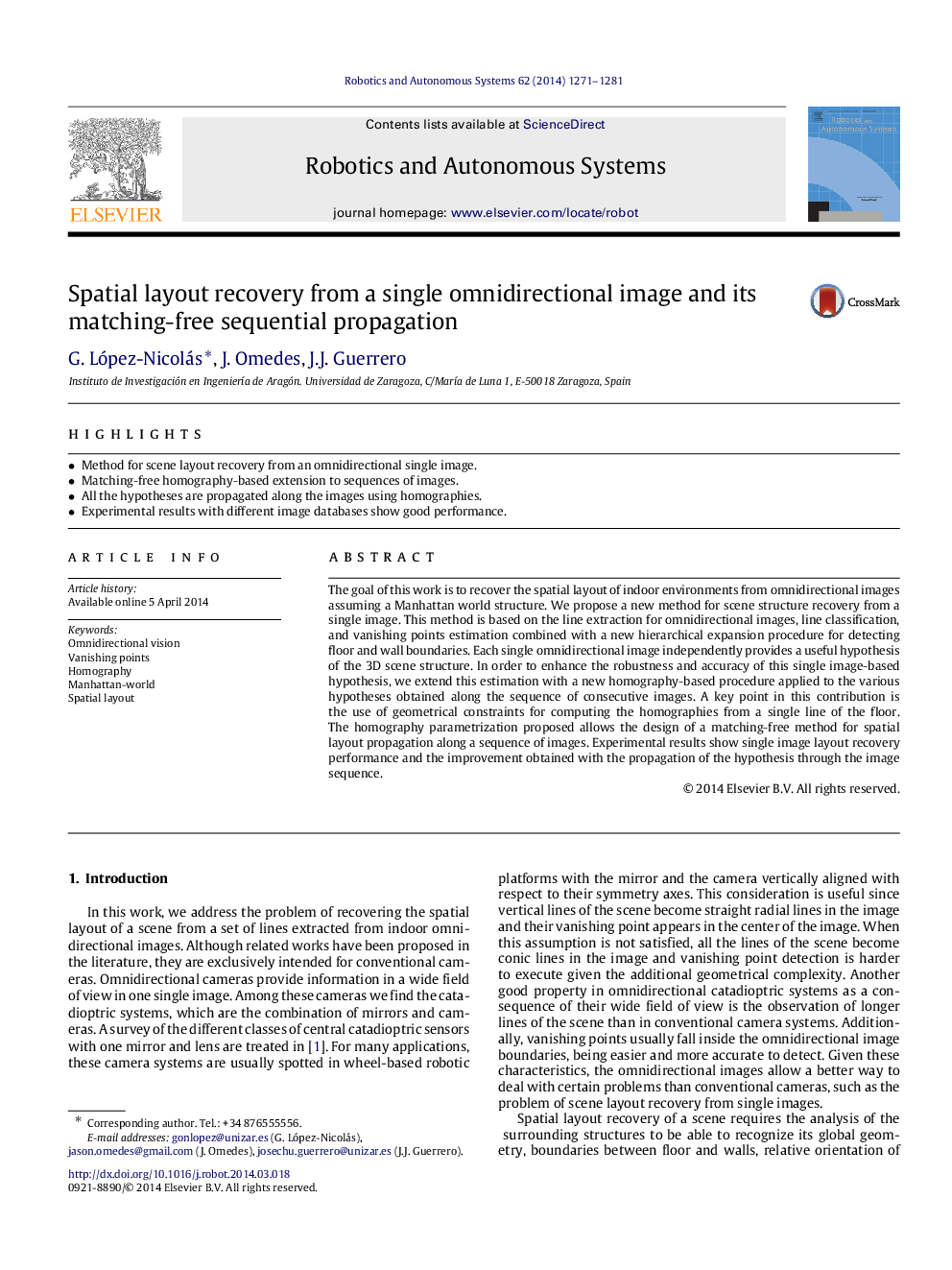| Article ID | Journal | Published Year | Pages | File Type |
|---|---|---|---|---|
| 413402 | Robotics and Autonomous Systems | 2014 | 11 Pages |
•Method for scene layout recovery from an omnidirectional single image.•Matching-free homography-based extension to sequences of images.•All the hypotheses are propagated along the images using homographies.•Experimental results with different image databases show good performance.
The goal of this work is to recover the spatial layout of indoor environments from omnidirectional images assuming a Manhattan world structure. We propose a new method for scene structure recovery from a single image. This method is based on the line extraction for omnidirectional images, line classification, and vanishing points estimation combined with a new hierarchical expansion procedure for detecting floor and wall boundaries. Each single omnidirectional image independently provides a useful hypothesis of the 3D scene structure. In order to enhance the robustness and accuracy of this single image-based hypothesis, we extend this estimation with a new homography-based procedure applied to the various hypotheses obtained along the sequence of consecutive images. A key point in this contribution is the use of geometrical constraints for computing the homographies from a single line of the floor. The homography parametrization proposed allows the design of a matching-free method for spatial layout propagation along a sequence of images. Experimental results show single image layout recovery performance and the improvement obtained with the propagation of the hypothesis through the image sequence.
